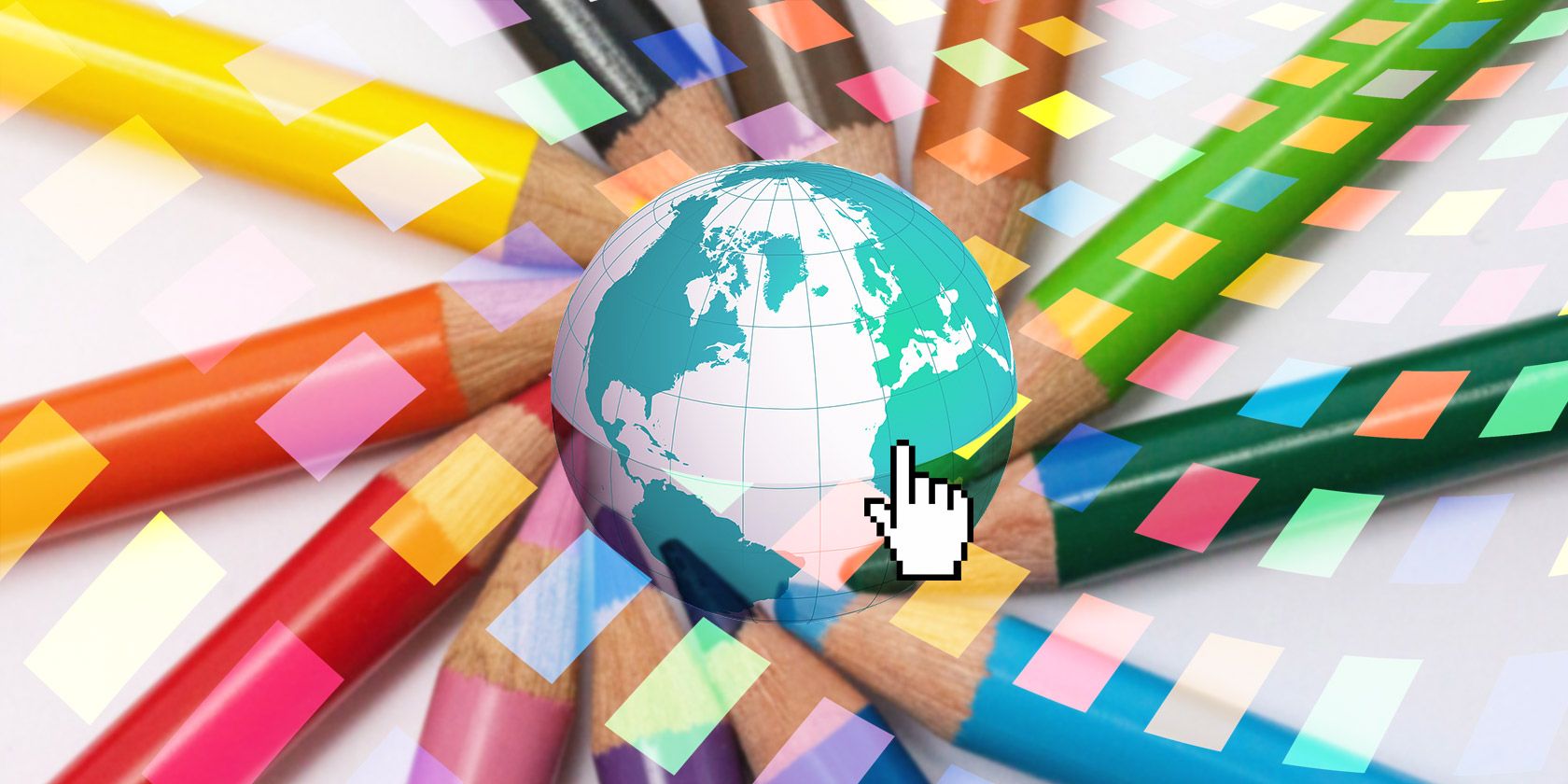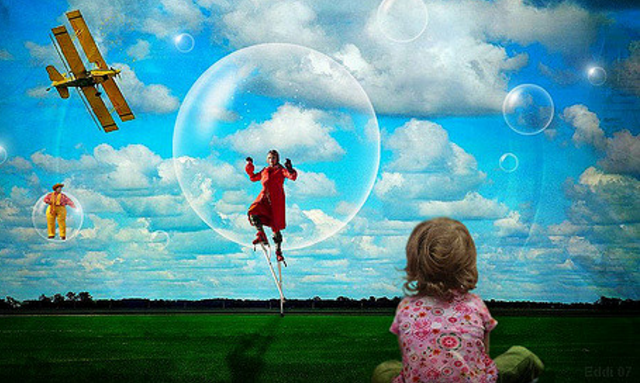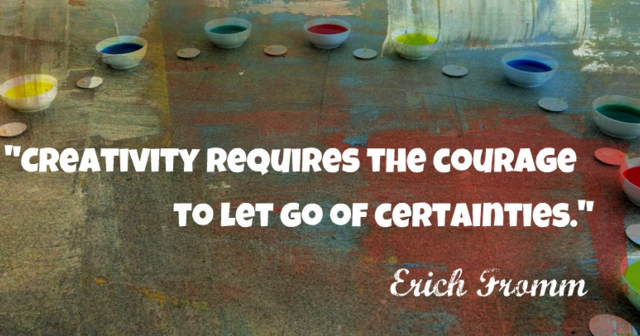It's time to stop accusing the Internet of being an obstacle to creativity. Used properly, it can massively enhance your creativity in all areas of work and life. Here we'll show you how to make that happen.
In an essay series on Creator Culture, Guardian columnist Damien Walters wrote,
"It is our longing to create that is our deepest drive, and the one that makes us the most human. We ignore it at our own cost".
But to steal terms from lawyer Lawrence Lessig, we have evolved from a read-write culture, to a read-only culture. The click of a like button has replaced a heartfelt note. We avoid boredom with mindless consumption instead of mindful creation.
It is true that we now broadcast more to the world than we ever have. From Tweets about a show we're watching to a selfie of us on a night out. But these broadcasts are not creative, but mindless — the antithesis of creativity. And this is the kind of content we are surrounded by.
It shouldn't be surprising then, that out of 18 industrial nations, according to a new report from the National Center for Education Statistics, American workers come "dead last" when it comes to problem-solving skills using technology.
Creativity is a Choice
But at the same time, even in America, creativity is growing exponentially, just like it has since the birth of the Internet.
Within just a few clicks, we can see the skilled creativity of dozens of people who chose to be creative. That's because the barrier to entry is almost nil. The cost of creative failure is minimal. And the number of creative outlets we can express ourselves with is mind-boggling.
So do not be duped into believing that the Internet, or technology as a whole, destroys creativity. It certainly can be used to stifle our creative impulses. But it also has the potential to open up a world of creativity to anyone who chooses to go down the rabbit hole. So, if you wish for the Internet to help you be more creative, enter the rabbit hole with me.
You're Spoiled for Choice
Long before we all had access to the Internet, we could write, play music, paint, sing, knit, carve. We were hardly starved of choice. But since the Internet has become omnipresent, those creative outlets have multiplied more than anyone could have dreamed.
If you enjoy writing, you can start a blog, publish to Medium, or submit your work to a huge number of websites. For those willing to take on more of a challenge, self-publishing a book is easier than ever.
If you love Photography, you can access powerful, free photo-editing software. You can publish incredible photos to your own audience with Instagram, and even sell your photos from within an Internet browser.
For videographers, YouTube and Vimeo have opened up creative worlds that can allow even the lowest budget of short films to reach an audience of millions. While Snapchat has made the production and publication of short, creative videos simpler than ever.
If you love to physically make things, huge online communities such as Instructables are springing up around the web. And with a little knowhow, Open Source projects like Arduino are empowering anyone to solve technical problems themselves.
The list is inexhaustible, with resources, software, and online communities for whatever creative endeavor you want to pursue, from recording an album on your iPhone to making a video game without knowing a word of code.
If They Can, You Can
This creator culture isn't some self-help pipedream. The barrier to entry is low. All it takes is a choice to carve out a small amount of time each week to pursue something creative. Ditch Netflix, or wake an hour earlier for a month, and fill that time by creating.
Maria Popova loved reading, writing, and creatively combining ideas, which she shared with a small mailing list of friends. Her website — Brain Pickings — now receives hundreds of thousands of visitors each month, and is a labor of love Maria works on full time.
Evan Puschak (you may know him as NerdWriter) is a film-maker who started creating short videos that delved into the meanings behind popular culture (see one about Harry Potter above). He published these on YouTube as nothing more than a hobby. He now has 400,000 people following his YouTube channel, and earns an income from his creative outlet.
There are thousands of stories like these, where someone indulged their creativity, put it "out there", and are now impacting huge audiences. But whether or not you want a huge audience, the "longing to create… is [still] our deepest drive, and the one that makes us the most human".
Whether the results of your creative labor are seen only by you, or by an audience of millions doesn't matter. But being creative does. So if you find yourself wanting to increase and nourish your creativity, so you can spend more time creating instead of consuming, here's some advice.
Have an End Goal
The first step of the Creative Problem Solving (CPS) methodology is to "clarify and identify the problem". This is an important step in being creative. To have a problem to solve, or question to answer, is the main step to successfully and creatively accomplishing your end-goal.
A useful way to do this is to use the 5 Whys method that Sakichi Toyoda introduced to Toyota in the early 1900s. When you ask yourself "Why do I want to do this?", the first answer will be pretty broad, and won't get to the heart of the problem. So keep asking yourself why another three or four times. This should be enough to help you dig to the root of the problem to pinpoint what you're working on.
As an example from Wikipedia:
- Why? - The battery is dead. (first why)
- Why? - The alternator is not functioning. (second why)
- Why? - The alternator belt has broken. (third why)
- Why? - The alternator belt was well beyond its useful service life and not replaced. (fourth why)
- Why? - The vehicle was not maintained according to the recommended service schedule. (fifth why, a root cause)
Once you've figured out the root cause, you can reword this into a creative challenge. In this case that could be: How can we ensure more vehicles are maintained according to the recommended service schedule? Each challenge you articulate should focus solely on one problem, but should be broad enough not to limit your creativity.
These strategies can be delved into with a paper notepad, but there are other online tools that can help to visualize each of the whys and challenges more clearly. You can build three stunning mind maps for free using MindMeister. Lino (iOS, Android) can help you play around with your ideas with digital Post-It notes. And Microsoft OneNote (read our introduction) is an easy, visual way to organize your thought process.
Know Your Area
Unfortunately, solving a creative challenge without having an in depth knowledge of the relevant area(s) is unlikely to result in much creative success.
This is where research and rapid skill acquisition abilities are invaluable. I've written before about how you can bypass Malcolm Gladwell's 10,000-hour rule, and acquire valuable skills much more quickly. In essence, you'll need to:
- Create a feedback loop to spot your weaknesses and learn from them
- Use "Deliberate Practice" to methodically and strategically eliminate those weaknesses
- Start teaching others what you learn, as this helps you to more fully grasp the concepts
As Margaret A. Boden says in Creativity in Education:
"Creative thinking cannot happen unless the thinker already possesses knowledge of a rich and/or well-structured kind". Having in depth knowledge that's relevant to your creative challenge enables you to not just fully understand the problem, but also to come up with creative ways to solve that problem within the confines of that area."
So, if you're struggling to find a solution to your problem, start learning as much as you can about the area. As your knowledge expands, you'll be able to see different ways to defeat the problem. To help with this, finding online courses on sites such as Lynda or Coursera will be extremely helpful. As will finding YouTube channels and blogs on those topics, and then using these to keep up to date with that area of expertise.
Expand Your Horizons
To move up the levels in creativity, you must expand your horizons further than simply the area in which your creative challenge lies. As you expand your knowledge into other areas of interest, from learning photography, to speaking another language, the angles from which you can attack your creative challenge increase exponentially.
Blogger Emilie Wapnick calls these people with an expanding array of interests a Multipotentialite, which she discusses in this TEDx talk:
Naturally, the more areas you delve into, the more solutions you will be able to conjure up from your myriad interests. This isn't to say you need to master each of these interests. Simply having a basic grasp of a diverse range of fields is a huge boost to your creativity.
Imagine the incredible results that could come from a programmer who also has an interest in illustration, photography, and literature, versus a programmer whose only hobby is reading the tech news.
It's at this intersection between myriad fields of interest where some of the most exciting creative breakthroughs can happen. And so to reach this level of creativity, create some free time for yourself, allow for serendipity, listen to the most random audio courses, and follow your curiosity.
Collaborate
No matter how many fields of interest you delve into, you're unlikely to ever satiate your appetite for learning. This is why it's important to create a network of friends that covers not just your own areas of interest, but many others beside.
By doing this, you are effectively creating a mastermind group that houses a huge range of knowledge, and thereby masses of creative possibilities.
You can then generate ever-more creative solutions to your challenges. And, you guessed it, there are tons of apps and online services to help with creative collaboration. From using Flockmod for collaborative drawing, to using Google Drive for collaborative writing. You can even get a group of musicians together online to record an album from remote locations.
From Consumer to Creator
Yes, the Internet can stifle creativity with temptations of Netflix binges and social media scrolling. But it also houses the potential to massively enhance your creativity.
The world's knowledge in virtually any area you can imagine is literally a few clicks away. As are some of the worlds most talented individuals. In other words, there is no excuse for you not to build your knowledge, expand your interests, connect with interesting people, and move yourself from being a read-only Internet user, to being a new member of the creator culture.
With these ideas, and the huge array of tools available to you, any creative challenge can be tackled head-on during your free time. You just need to know what you're aiming for, and to develop the knowledge to find unique ways to solve those problems, whether that's on your own, or with the help of others.
What do you think? For you, is the Internet a creativity aide, or a creativity hindrance? If it's an aide, which sites and services help you to solve problems in more creative ways? And if it's a hindrance, which sites are to blame?
Image Credits: Where the ideas live by Eddie Van W (Flickr), Bullseye by Emilio Kuffer (Flickr), Study by Moyan Brenn (Flickr), Collaborating by Gerald G (Flickr)







